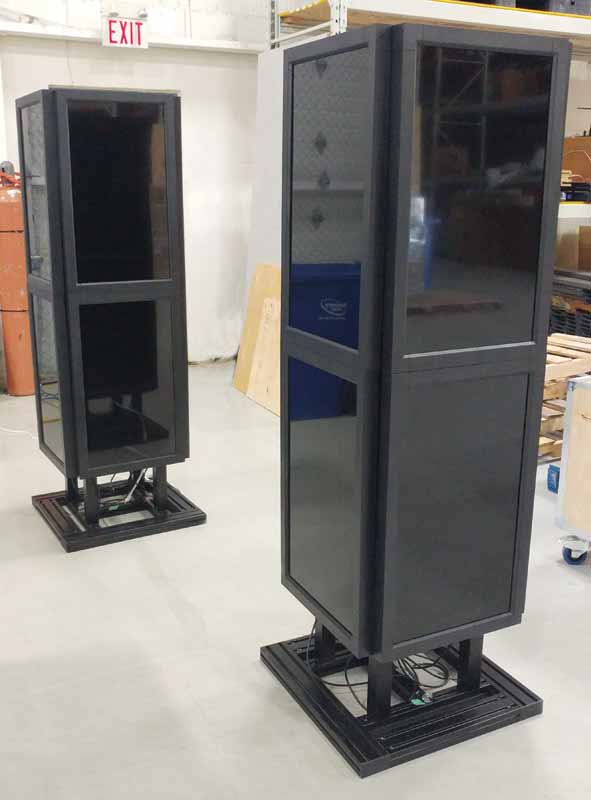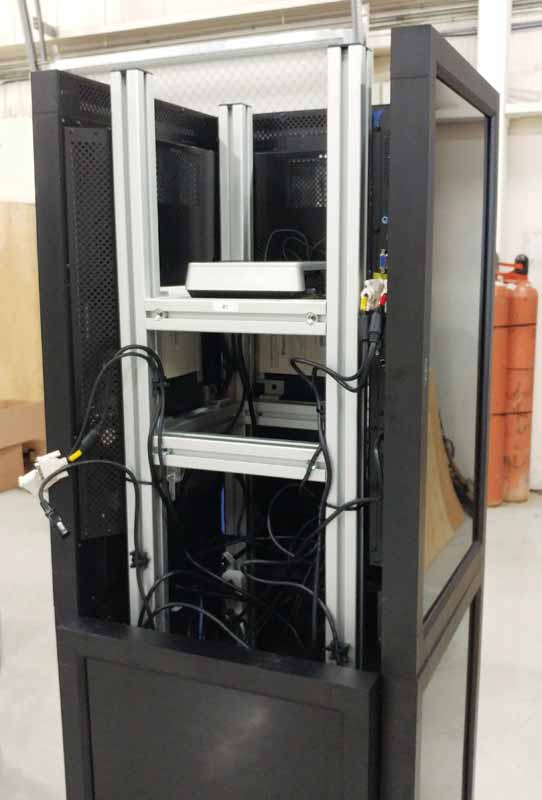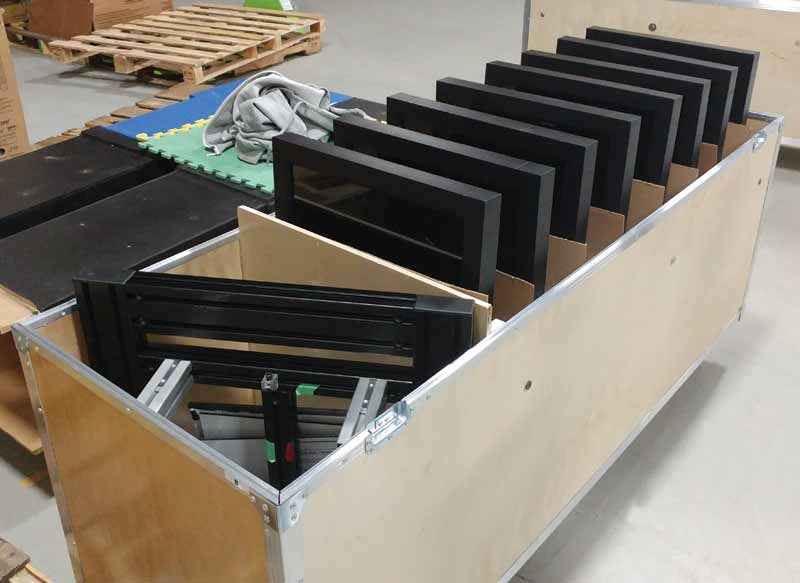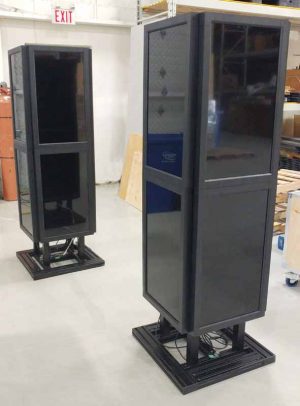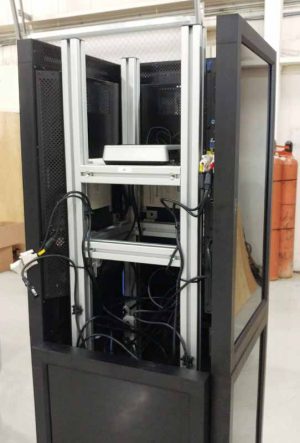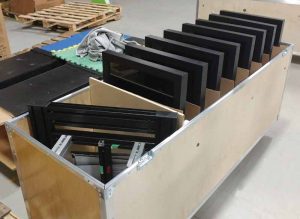How to Succeed with an Audiovisual Installation
by | 8 April 2019 10:09 am
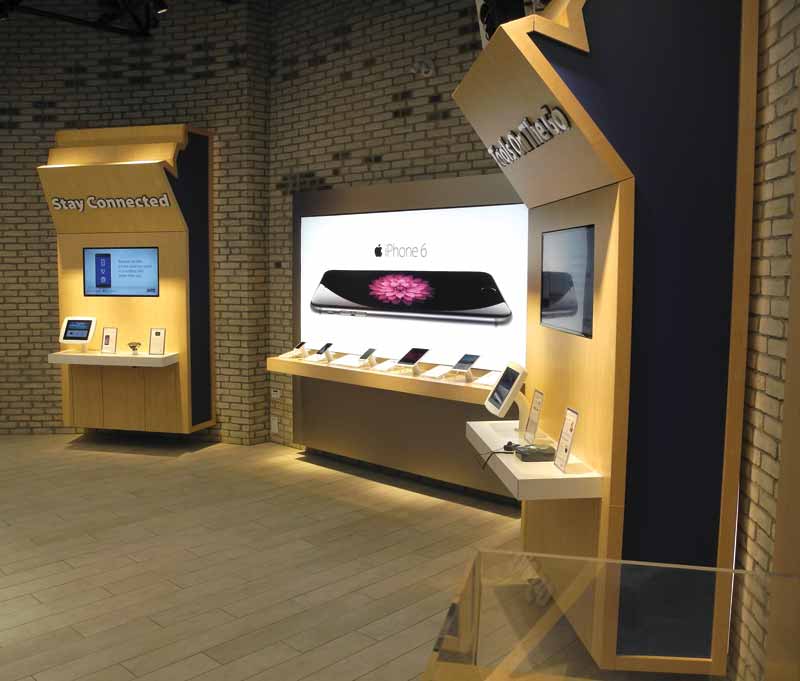 [1]
[1]The physical display casings are often as important as the digital messaging delivered by the display screens to ensure the brand is presented well.
By Phil Catchpole
As the lines between digital signage and traditional audiovisual (AV) technologies blur, they continue to share the common need for physical installation services, referred to here, as the “mechanics” of an installation. A better understanding of the strategies, processes, and management procedures in the mechanics of an AV installation, whether it be digital signage or a more traditional presentation type solution, will greatly improve the quality of the installation and the journey getting there.
The mechanics not only include the components, such as hardware and software, but also system design, procurement, physical installation, project management services and, above all else, people. All AV installations involve the need for a good team. All too often, an installation team is summarized as the customer and an AV reseller. However, the truth is it is rarely a one-stop shop experience. Installation partners often include electricians, general contractors, information technology (IT) specialists, architects, and engineering firms, many of whom are not on an AV reseller’s team. That said, all of these partners need to work together.
The right AV reseller
Though the AV reseller is only one of the team members, this person typically plays a key role. For instance, they not only provide the majority of the mechanics, but also typically act as a sounding board for the customer when flushing out the project’s vision. Excluding the customer, the AV reseller likely knows the goals and understands the vision better than any other team member. That said, how does one identify the right AV reseller for a particular AV project? Although not a guarantee, considering some, if not all, of the criteria below can help.
• Experience—ask for references and past project examples that are similar to the current project. Examine their credentials, ask questions, and verify they have the necessary knowledge and skills to undertake the project.
• Team player—an AV reseller will be part of a team. Whether that means leading or following, he/she is a valuable asset to any project installation.
• Responsive—do they show up on time and come equipped with the right information? Do they reply to questions and tasks in a timely manner? Problems during the selection process should be a red flag when it comes to future problems.
• Innovative—all AV installations should include solutions using current technologies, take advantage of the unique environment of the project, and examine more than one way to achieve the goal. Thinking outside the box helps build a better mousetrap.
• Fiscally responsible—the cheapest price is not fiscal responsibility! Finding solutions that take advantage of alternate components, unique site assets, or taking advantage of manufacturer’s promotions—such as volume discounts—is fiscal responsibility. All costs need to be presented in writing to minimize “price creep.”
• Clarity—often, AV projects include technology that many people have little knowledge of or experience with. Having an AV reseller who can articulate “tech speak” into “non-tech speak” can be important in conversations with all team members. If one does not know what they are getting for his/her money it is important to ask for clarity!
Having a plan and sticking to it
Like any system, an AV installation needs to start with a plan—no matter how simple a project is. Making a plan and sticking to it avoids problems such as budget creep, compatibility, or delays. Everyone on the team should be aware of the plan and know what procedures to take should it need to be changed.
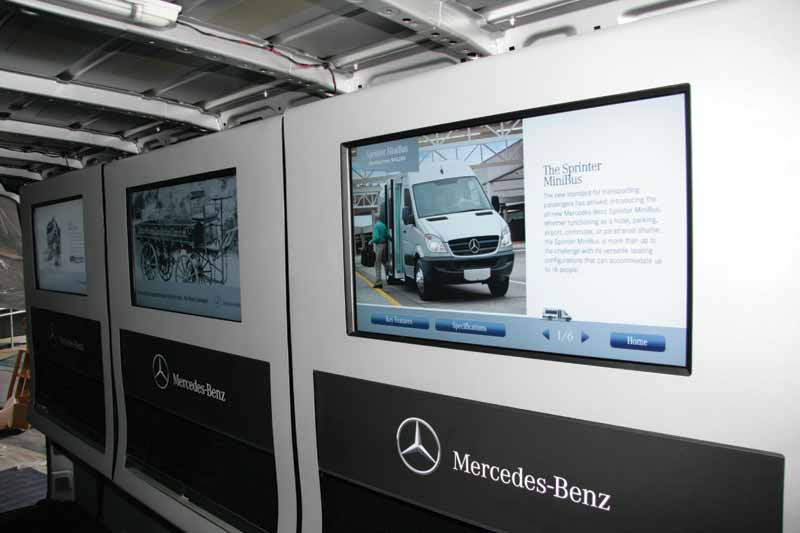 [2]
[2]This specialized installation includes three interactive touch displays housed in custom enclosures inside a van at car shows. Visitors were invited to walk through the van to interact with the displays that presented the brand history, technology, and model specifications.
The plan should include system design considerations, procedural factors for site work, documentation around safety issues, and reporting methods. The plan may only be a verbal discussion followed up with some e-mails or it may be a physical document for more complex builds, but it does need to be understood and agreed to by the team prior to commencing the project.
The following are some considerations to help get the right components for the project:
• Functionality—does the component provide the right technology to meet the needs of the project? Putting square pegs in round holes never works.
• Manageability—does the component provide an easy-to-use interface for the end user? This is a particular concern in the case of software components, interactive devices such as touch screens, and control devices that interface with end users. The skill-level of the end user(s) using the component should also be kept in mind.
• Availability—can the component be sourced for the intended site? Having seen a solution in Paris does not mean the components are available in Anchorage, AK.
• Affordability—consider not only the initial cost for the component, but the long-term operability and ongoing maintenance. As an example, discreet light-emitting diode (LED) displays—both indoor and outdoor—are initially considered by many customers as “expensive,” until looking at the long-term operability of the technology.
• Warranty—what is the warranty and what type is it? Many AV components come with either a “manufacturer’s depot warranty” or an “on-site warranty.” By definition, they are both warranties, but their implementation is very different. There are financial as well as esthetic implications when servicing is required. Having a black screen because parts are on order does not usually go over well at any presentation.
Selecting the right components
Component selection usually falls under the responsibility of the AV reseller but is commonly influenced by the customer. This discussion often starts with the line, “I saw this perfect installation when I was on a business trip. Can you build that?”
 [3]
[3]Located behind heavy, two-way mirror glass, this installation required a high brightness display to compensate for the glass and the very high ambient light within the retailer’s store. Reflections also needed to be taken into account to ensure better content clarity.
The simple answer is, “Yes.” After all, someone did build it. The more important question however should be: “Is that installation the right one for this project?” The answer lays less in technology and more in the goals and deliverables of the project. Further, are the mechanics of that particular “perfect” installation going to deliver the outcomes for this project? There is no definitive answer or list of various components, as every AV project is unique. Even a basic single display hanging on the wall can be considered unique.
Whose job is it anyway?
Making assumptions is definitely one way to have an AV project fall off the rails. No project should include the line: “But I assumed you were doing that.” Having a clear understanding of who does what, preferably in writing, is critical before the go ahead is given.
All AV installations involve the need for a good team. All too often, an installation team is summarized as the customer and an AV reseller.
Even a simple AV installation will include physical components installed in a space with electricity and network connectivity as a minimum. Other projects, such as a large, outdoor LED display will require even more considerations such as engineering stamps, local utility intervention (e.g. gas and communication line location), bylaw approvals, and even traffic management services.
Though many AV resellers do not have all the required resources under their own roof, many have a network of sub-contractors who can bring many of these skills to the project. That said, it is important one is clear about who will provide a particular service for a project and, equally important, who is going to contract them.
The following are some things to consider about the team partners on a project:
- Timing—when will they be needed? Engineering services or bylaw approvals can take weeks, months, or even years.
- Responsibility—what will a particular partner bring to the project? This can run the gamut of components, services, personnel, or management skills.
- Contracting—who is paying for the different services being rendered?
- Ownership—what are the ownership responsibilities of this partner? To whom do they report? Everyone working on the project should understand this.
- Communications—identify the lead contact and ensure all members of the project team not only have this information, but also clearly understand the protocol when any inevitable questions arise.
- As-built drawings—one might be amazed by the number of AV installations they may be called on to service or modify that have no “as-built drawings.” Without up-to-date technical drawings, the current work will be prone to errors and future changes will be costly and difficult. All installations should have drawings clearly showing how the system is built.
- Workmanship—in addition to the warranties mentioned earlier, it is also important to have a clearly defined warranty for actual workmanship. It should define the warranty term along with what is and is not covered.
Location, location, location
As in real estate, the location of an AV installation is very important. This may be as simple as an available wall space or as complex as an LED scoreboard suspended in an arena. AV installations are all about an audience interacting with the solution, whether they are viewing it or physically interacting with it.
Best lines of sight, ergonomics, and accessibility all play a part in choosing a location. Unfortunately, the audience is not all the same. That said, the following are some considerations one should consider to ensure the delivery of a clear message.
- Audience—who are they? What type of installation might they respond to best? This will potentially impact things like height of visuals and whether or not audio is used.
- Line of sight—unless the installation is audio only, one will want to examine the site to understand how the audience moves through the space. When will the intended audience be impacted by the installation? Is this engagement appropriate for the timing in their site journey?
- Ambient light—when thinking about the location it is important to understand how it appears at various times of the day. This is particularly important when it comes to ambient light. Sunshine across displays, unless they are high powered LED, will usually make the content difficult, if not impossible, to see.
- Sound—including audio components within an installation is an option that needs particular attention. Audio is a powerful sensory aspect of a presentation, but poor audio delivery is a sure way to disenfranchise the audience. On the other hand, audio can lead to frustration for anyone restricted to the location and having to listen to the same sounds repeatedly. Think about the “non-audience” such as staff within a retail space.
- Esthetics—an often misunderstood aspect of any AV installation is the final esthetics. Unfortunately, AV technology has wires and cables, usually a lot of them. None of them are particularly attractive when dangling in a visible space. Also, think about wall treatments or enclosures for displays.
By simply recessing them into a wall, for example, the installation takes on a new perspective. - Accessible for all—sadly, many AV installations do not consider audience members with special needs. Visual, motor, and audio impairment requires special considerations. An interactive kiosk that is positioned too high for wheelchair access is not well planned. Government and private agencies exist to provide advice on how to make things more accessible in a particular space.
- Passive or interactive—seeing a presentation is good, but remembering it is better. The use of interactivity, where appropriate, is more impactful then just passively viewing a presentation. Touchscreens are only one form of interactivity. Proximity sensors, interactive content (e.g. Twitter), lift-and-learn displays, and alternate input devices are other examples.
A final word
There are many other considerations that can influence an AV installation. Even those presented in this article can be explored much deeper. Perhaps as a final thought, one should keep the following in mind for any AV installation:
• plan it;
• communicate the plan;
• know who is on the team;
• know the goal;
• ask questions when unsure; and
• think about what will keep it working tomorrow.
Phil Catchpole CTS, DSCE, is a project manager for Dot2Dot Communications, a full-service visual communications company that designs, develops, and manages immersive digital signage experiences. For more information visit www.dot2dotcommunications.com[4].
- [Image]: https://www.signmedia.ca/wp-content/uploads/2019/04/mts-store_rp.jpg
- [Image]: https://www.signmedia.ca/wp-content/uploads/2019/04/mercedes-van_rp.jpg
- [Image]: https://www.signmedia.ca/wp-content/uploads/2019/04/Links-of-London_rp.jpg
- www.dot2dotcommunications.com: https://dot2dotcommunications.com/
Source URL: https://www.signmedia.ca/how-to-succeed-with-an-audiovisual-installation/
